Exposing Apocalyptic Economics with Steve Keen
Steve Keen has been exposing the ways mainstream neoclassical economists—including winners of the so-called Nobel Prize in Economics— have been arriving at their absurdly optimistic numbers regarding climate change, and they’re terrifying. In this interview with Colin Bruce Anthes, Keen goes through prevalent examples in detail and argues that these numbers and the methods behind them must simply be thrown in the garbage.
Colin Bruce Anthes
Welcome to theAnalysis.news. I’m Colin Bruce Anthes.
You may have noticed that while natural scientists are focused on the ecological costs of climate change, social scientists and politicians seem much less concerned with the economic costs. According to renowned Australian economist Steve Keen, the reason is terrifying.
Dr. Keen has been going through the works of the most mainstream neoclassical economists on whom our politicians base their projections and looking at how they’re arriving at their numbers regarding climate change. He has found that they repeatedly confuse climate, the foundation of our energy and food, with the weather, with some of the biggest names even stating that 87% of the economy won’t really be affected by climate change because the jobs are primarily indoors. This is such a fundamental and apocalyptic mistake that it leaves little room for reform. Dr. Keen argues that we must simply abandon these economists and their framework, saying it’s us or them.
Steve Keen has a history of calling out junk economics. He correctly and famously predicted the 2008 recession and spent the years leading up to the subprime mortgage crisis berating mainstream economists for failing to account for the role of private debt and credit. If he says we need to sound the alarm, we should probably pay attention. Steve Keen, welcome to theAnalysis.
Steve Keen
Thank you. That was a very good introduction, very thorough.
Colin Bruce Anthes
I want to make sure that I’m framing your position correctly because I’m familiar with the pernicious influence of big money on politics and economics. But you’re saying the problem runs much deeper than just corruption, and that’s why we can’t swap out the good neoclassical economists for the bad ones.
Steve Keen
It is simply what they believe. People who are critical of economics from outside of the profession often think that economists are shills for the capitalist, that sort of thing. I’ve seen that quite regularly on Twitter, of course, and that’s getting the horse before the cart. Because, in fact, training in neoclassical economics, if you accept it, if you believe it, ends up making you effectively a zealot for your vision of what capitalism is. You really have a belief in capitalism as the ideal social system. Therefore, if you see anything which challenges the sustainability of capitalism, it’s an automatic tendency to reject it. Of course, that can benefit the capitalist class, but it’s not why they do it.
This is what happened in this particular case. No one paid William Nordhaus to assume that 87% of the economy would be unaffected by climate change because it happens in carefully controlled environments. That’s his own attitude to capitalism. Given their model of how capitalism functions, it’s an infinitely flexible system, therefore, it can cope with anything, therefore, climate change can’t be a problem. And that mindset is what has determined the predictions they have made, which are so badly based that they should simply be thrown in the garbage bin. That’s, of course, what I’m trying to explain to policymakers, media, and so on.
Colin Bruce Anthes
Let’s take a look at what they mean by climate within these models and what, say, a natural scientist would call climate. Let’s make sure we’re not making the same mistake that they’re making.
Steve Keen
To some extent, I think we can blame how climate is defined in conventional organizations, like, for example, NOAA, the National Office of Oceanic [Atmospheric] Administration– I think it stands for. A wonderful acronym. I may have got the actual title there wrong. They say that weather is what you experience on a day-by-day basis. Climate is the average of weather over a long period of time. And that really makes it seem that climate and weather are statistically different distributions but the same basic data sets. Weather is particularly the day, and climate is over a range of days. That’s fundamentally misleading when it comes down to what climate change actually means.
To me, I think about climate as the actual structure of the fluid flows in the oceans and the atmosphere of planet Earth. And to me, climate change, for example, would mean going from the three circulation cells that currently set the weather patterns in each of the two hemispheres of the planet, the North and South Hemispheres. So you have a cell where there’s rising air at zero degrees and falling at 30; that’s the Hadley cell. Then you have what’s called the Ferrel cell, which has falling and rising at 30 and 60, and then the polar is 60 to 90. That’s why you have such substantial temperature differences between the tropics, the temperate zone, and the polar zone. It’s relatively consistent temperatures inside each of those zones.
Now, if that flips over, and it has flipped over frequently in the Earth’s past due to natural factors, of course, if that flips over to a single cell, then what you’ll have is rising air at the poles, at the equator, and falling air at the poles. In the middle, effectively, generally speaking, a drought, a desert. Now, that’s climate change. So that is a structural change to the patterns of fluid flows in both the oceans and the air that generate the weather we feel on a daily basis. There’s no way that there is– it is not average anymore. It’s a complete change of the system that generates the weather. That’s what climate change is.
Colin Bruce Anthes
Can you go through the disparity between the kind of description you’ve just given, the kind of description we might expect from a natural scientist, and the projections that these neoclassical economists are making?
Steve Keen
Well, the description that science is giving is existential. If we exceed, and they’re giving vague numbers because, of course, this has never been done before, not only in the history of humanity but also in the history of the planet, we’ve never had as rapid a change in the carbon dioxide levels as we’re forcing on the planet right now. Of course, there are various structures that have evolved over time in our current climate, the Holocene climate, such as the Arctic having summer sea ice. So the Arctic reflects 90% of the energy that falls on it during summer. Greenland, a similar reflector of energy, and the Antarctic are the same in the Southern Hemisphere. The circulation patterns of the integrated ocean thermohaline circulation, which is an oceanic river, hundreds of times the volume of all the rivers, the continental rivers on the planet. So all those huge structural elements, that’s the defining nature of the climate.
What they’re saying, what scientists are saying, is that if we increase the temperature by as little as one degree, we could trigger a breakdown in many of those characteristics of the current climate, and that would then cause a cascade. Scientists have been saying numbers like don’t let it increase more than two or three degrees.
The most recent paper by Kemp et al, I think in 2021 or 2022, came out saying three degrees is their limit for an absolutely unsustainable temperature increase. You’ll see figures as low as 1%; we’ve already exceeded 1%. So the scientists are speculating, but all of the speculations say anything above that level you’re talking about, such a change in the climate that we could no longer sustain the sedentary human civilization we’ve had for the last 12,000 years. Our agricultural system could be destroyed, and therefore the carrying populist, the carrying capacity of the planet could fall from the area of 8 billion, as we currently have, down to 1 billion if we’re lucky. You know, that means 7 billion people die.
Colin Bruce Anthes
Wow.
Steve Keen
So that’s the scale the scientists are talking about. Economists, on the other hand, are saying, and this is quoting Nordhaus, “a six-degree increase in temperature will cause an 8.9% fall in GDP compared to what it would be in the complete absence of climate change.” If you look at the most recent IPCC [Intergovernmental Panel on Climate Change] report, Working Group Two, Chapter 16, as the economics chapter inside there, that chapter said that “a four-degree increase in temperature by 2100 four degrees Celsius could cause between a 10-23% fall in GDP compared to what it would be in the absence of climate change.” Therefore, they’re assuming growth for the next 80 years, which would increase per capita incomes by a factor of five. They’re saying rather than being five times as large, they’ll be four times as large, which is trivial.
Colin Bruce Anthes
Wow.
Steve Keen
So that’s the difference. One is that they’re saying a minor decline in overall productive capacity while it still grows over time, whereas the other side is saying we won’t have a civilization past, certainly past four degrees; most of us don’t even suggest four degrees level of warming. They’re saying forget it. Human civilization is over at that level.
Colin Bruce Anthes
Wow. Yeah, that’s a disparity, alright.
Steve Keen
Huge.
Colin Bruce Anthes
It’s enormous. I think for those who do not know who Nordhaus is and who some of these figures are, this is not a case of, say, big tobacco finding some fringe person somewhere who will accept a bribe to say something crazy. These are the most mainstream figures.
Steve Keen
Nordhaus, first of all, has taken over the mantle of publishing one of the dominant textbooks, the Paul Samuelson textbook. He is now the continuing editor of the Samuelson textbook on economics. He was elected president of the Economic Association sometime in the last few years– I forgot when he actually was– and he got the Nobel Prize, the so-called Nobel Prize for Economics, in 2018. So he’s high status in the profession. He and a group of economists– it’s only a very small band of economists, by the way. This is one thing I try to emphasize to the profession. I say, for God’s sake, ditch Nordhaus because if you don’t ditch Nordhaus, you will be responsible for– when the shit hits the fan and the shit is coming, you will be, economics, in general, will be responsible for letting this garbage and, frankly, that’s the only way I can describe it, this garbage get published. If you had decent refereeing of papers on the basis of the science of climate change being applied to these economic papers, none of them would have been published.
Colin Bruce Anthes
I want to delve a little further into some of the examples that you talk about as you go through the papers that these people have published and the statements that they made. The 87% number that’s given, one of them is about the Gulf Stream, which is absolutely terrifying. Can you go through some of the extreme falsities that are being published on a very wide scale right now?
Steve Keen
They have about four methods they’ve used to make up, and I emphasize make-up numbers, not generate data, but make-up numbers that then they say are related to climate change. So the very first is what they call the enumerative method. The enumerative method, the way they describe it, is that they take data from science papers and add up the damages that science papers say, and then you are adding up from the bottom up. So that’s what they call the enumerative method.
Now, when you take a look at Nordhaus, 1991, To Slow or Not to Slow: The Economics of Climate Change, published in the Economic Journal, which is published by Oxford University, and certainly one of the top three or top five journals in economics in 1991. Here he said that “there are some activities, such as microprocessor fabrication or open heart surgery, which occur in carefully controlled environments,” that’s literally a quote, “which will not be particularly subject to climate change. On the other hand, there are other activities which are exposed to the weather and therefore exposed to climate change.” He said, “our estimate,” meaning his estimate, “our estimate is that 87% of the American economy will be negligibly affected by climate change because it takes place in carefully controlled environments.”
Now, when you look at the table here, which is table 15 in that particular paper, I think it was all of manufacturing, all of wholesale and retail services, all of the finance sector, most of real estate, except for a small amount of coastal real estate, and he even included mining, apparently not being aware that a lot of mining is open cut and therefore exposed to the weather. So that is the scale of it. You would hope that it would just be an aberration that got through, but later papers fixed it up. Instead, that was being maintained all the way through. They don’t use that method anymore, but they haven’t rejected the numbers they got out of that.
Now, when Nordhaus did his calculations, he had 3% of the economy being seriously exposed, which was largely agriculture and forestry, and 10% marginally exposed. When he added up his numbers, he got a total of 0.26% change in the reduction in GDP for a three-degree increase in temperature.
Colin Bruce Anthes
Wow.
Steve Keen
Now, the reason he got that [inaudible 00:13:06] when it came to the section he said would be exposed, which is agriculture and forestry, he said he had taken into account the fertilizer effect of carbon dioxide. He had somewhere between a plus 9.7 and -10.5 and, therefore, the average of the two was what he put in as the major source of damages; that’s where the 0.26% of GDP fall came from. Then he said, “there may be other factors that aren’t included here. I might bump it up to 1%. But my hunch,” and literally the word hunch in a so-called scientific paper, “my hunch is that the damages will be and no more than 2% of GDP from three degrees of warming.”
Colin Bruce Anthes
Wow.
Steve Keen
A lot of those enumerative method ones come out with damages between, positive, actually, some of them think fertilizer effects are really good, with positive effects of up to 1% — Richard Tol published one of those papers– down to about 2 or 3% fall in GDP; that’s the range that they get.
Colin Bruce Anthes
Wow.
Steve Keen
The second method they call the statistical method. This is the very first paper that I actually saw, and I realized just how deluded they were on climate change. This is by [Richard] Tol in 2009 called The Economics of Climate Change. In that paper, he described what he called the statistical approach, which is used by [Robert O.] Mendelsohn, who’s one of the research colleagues of Nordhaus, who said, “Mendelsohn assumes that the variation of GDP with climate over space will hold over time.”
Now, what that means is Nordhaus– Mendelsohn, in this particular case, said it first and initially just with America; they then generalized a global distribution of income. But looking at, say, gross state products and average state temperature, you can then get this, and I’ve done this myself; it’s just a simple exercise to show how stupid this is. If you take a look at the average temperature for every state in mainland America, continental America, and the gross state product per capita, which is the state version of GDP, then you get a scatter plot. If you then graph the temperature on the horizontal and the income on the vertical, you get a scatter plot, which is a huge, wide scatter plot. But if you do a quadratic regression on that, and they almost always use quadratics, what they call their damage functions, that quadratic will tell you that each degree increase in temperature reduces your GDP by about 0.3% times the temperature change squared. Now, that therefore means that a ten-degree increase in temperature will cause about a 15% fall in GDP. Ironically, that’s a bigger number than Nordhaus himself uses.
So his damage function is that the damage to GDP from temperature increase will be zero 0.227% X the temperature change. And that’s where you get this six-degree increase in temperature, about an 8% fall in GDP. But it’s literally using the geographic nature of climate. So obviously, the climate of Florida is different to the climate of North Dakota, but that’s sitting inside exactly the same temperature distribution of global temperature. There’s no change in global temperature between Dakota and Florida because they’re on the same globe. They simply assume that very light variation, relatively trivial role of temperature in determining GDP will be what climate change does over time.
The craziness of this is that if you– and I’ve made this case for a research project I’m working on right now– the reason that you can have a successful economy in Florida and have a successful one in Dakota is they trade with each other. There is stuff that North Dakota can’t produce that Florida can, and there is stuff that Florida can’t produce that North Dakota can. Part of the income is because North Dakota is selling products to Florida. Now, you can’t sell through time, okay. You can’t sell wheat produced in 2020 to people in 2100. So the whole idea that you can use what happens over space as an anagram of what happens over time is just nonsense. Again, it’s showing they simply don’t understand what climate change actually means.
The third method that has come along after that, and that is that acknowledging that mistake, some economists have said, “well, we need to have data where there’s a change in temperature, change in global average temperature, and we then compare that to the GDP or change in GDP. That’s been done by a number of people.
There’s a paper by [Matthew E.] Kahn, [Kamiar] Mohaddes, and a few others coming out of the International Monetary Fund, and they have said, “well, there’s a nonlinear relationship at the geographic level between temperature and GDP.” So they’ve worked out what that nonlinear relationship is for change in temperature over the period 1960 to 2014. I think that’s the dataset they used. They then extrapolated that forward 80 years. Now that only works if there’s no structural change to the climate over the next 80 years, which is nonsense because they’re talking about– they said that there is a 0.125 degrees Celsius change in temperature per year, which mounts up to 3.2 degrees over the next 80 years, will cause about, as I think, a 0.05 decline in GDP for each year. Therefore they’re saying that there will be a seven– and I love the false precision they give. This is supposed to be statisticians. This sort of false precision says you’re a child. You don’t know really what you’re doing. They’ve said that there will be a 7.22% fall in GDP by 2100 from a 3.2-degree increase in Celsius and temperature. Now they can’t even get today’s GDP accurate to one-tenth of 1%. Here they’re trying to predict GDP in 80 years’ time to two decimal places of accuracy. It’s just nonsense. So that’s the sort of thing there.
There are basically three methods. What they’re doing is really saying you can find the footprint for global warming in current data, and that’s just nonsense because it’s a cascading effect, and it’s the runaway process that we are now very, very close to triggering. That is the really scary thing. The complete structural breakdown of our climate will occur over the next 80 years, and all these predictions are just nonsense.
Colin Bruce Anthes
I’m not a particularly religious person myself, but there’s a church in my community, and it’s a good actor. For several years I volunteered on its committee as a community partner, and they were getting hit with thousands of dollars of new insurance costs because of the increased risk of the world.
Steve Keen
Absolutely. The climate instability we’re seeing right now, the crazy cold temperatures in America, crazy hot temperatures in Europe, drought in California, now it’s flooding in California; that volatility is being generated by the extra energy that we’ve trapped in the atmosphere courtesy of carbon dioxide. So we’re already seeing that real-world couldn’t give a damn about what economists think. The real world will do what the real world climate does under the energy pressure that we’re putting on the biosphere, and that is going to make a laughing stock of the predictions of the economists probably in this decade. At some point, it’ll be blatantly obvious that their damage estimates have got absolutely nothing to do with what’s actually going on, and the damages are far, far higher. In that situation, anybody who’s trusted economists either directly or indirectly by accepting their damage assessments and then putting that through insurance contracts and so on, they’re going to be forced to pay out an absolute fortune, and they’ll be bankrupted by the cost of climate change damages.
Colin Bruce Anthes
If we want to be able to think about this critically and productively and not make the same mistake as them, what is a good starting point for us to think about? What is the role of climate in the economy?
Steve Keen
First of all, just get a handle on what sort of changes are being spoken about. What is feasible to happen if the temperature rises any further? I’ll give one of my favorite examples because it’s terrifying, and the person who’s making it has impeccable credentials. The professor of Chemistry at Harvard University, James G. Anderson, was the person who discovered the hole in the ozone layer in the last century and led the campaign to close the hole. So his argument in a paper published in 2017 is that with the decline in the Arctic summer sea ice, that will trigger a breakdown of those three circulation cells. That means that storms that currently develop over the plains of America, central plains of America, which are enormous storms, will penetrate the stratosphere. So at the moment, those storms are restricted to the troposphere, which is below 20 km where we live and work. If it gets into the stratosphere, it will take moisture into the stratosphere. The current of the stratosphere has very, very low levels of H2O, so it’s a very dry stratosphere. When that water passes in, it will also carry in chlorine and bromide, partially from our own industrial processes but also even from volcanoes. That chlorine and bromide will increase, according to Anderson’s paper, increase the rate of destruction of ozone by a factor of 100. What that would mean is it’s no longer safe to go outdoors for humans, in particular. Other animals with fur have slightly better chances than us. Plants apparently have got a fair bit of protection against high levels of UV. But we won’t be able to go outdoors. I’m sorry, that’s the end of human civilization. If we can’t go outdoors during daylight hours, then what happens to our civilization? It breaks down. Of course, people will die of skin cancer. So it’s an appalling potential.
Now, in that situation, if that’s happening, you haven’t got an economy. And so that the existential stuff that I want people to realize is what we’re playing with here. So that’s the real danger. It’s not a case of a bit of damage here, a few more percent insurance claims, and stuff like that. It’s you can no longer manage a human civilization, and you couldn’t even manage hunting and gathering in that situation because you couldn’t afford to hunt during the day. It’s existential. That’s what I prefer people to look at rather than we’re working in terms of percentages of GDP and damages and so on. That’s the game the economists have played, and also, it’s a game of correlation, not causation. They have no theory as to how temperature causes GDP. They simply say, here’s this correlation we’re found in current data, and that’s what we’re going to use to predict the damages of climate change. It’s completely irrelevant to what climate change will actually do to human civilization.
Colin Bruce Anthes
I’m going to ask you a tough question. Maybe it’s too much for this interview, but my generation has never experienced a real recovery from 2008. COVID has caused more economic distress. Major companies like Goldman Sachs are already laying people off in anticipation of another downturn. We’re having a conversation about how economists have wildly overestimated how good things are going to be. So do we throw out these neoclassical economists who are making these terrible projections? If we put them aside and start to put a different theory in place, is there some feasible glimmer of sunlight that we can put in front of people to rally behind?
Steve Keen
Well, the main thing is we have to drastically reduce the load we put on the planet in terms of the biosphere. So carbon dioxide is the most obvious damage we’re doing, but everything else we do as well. We’re dumping plastics which are damaging food chains throughout the world. We’re intruding on what used to be virgin territory. We’re hitting up against– that’s where the pandemic came from. The fact that we’re intruding into areas which used to be off-limits for humans. Now we’re the best possible host for any pandemic. Why attack any other animal when humans are so prolific and distribute the diseases so well? So we’re making ourselves a target for all these hostile elements of the environment in which we live.
So the only glimmer would be to say, and I don’t think it’s going to happen. I think we’re going to have to go into a catastrophe before we reverse direction. But what we have to say is we have to drastically reduce our load on the planet now, and that means a drastic fall in the consumption levels of the rich that can be both global rich but also rich within each nation-state. So it’s not the poor who have to consume less because even in the case of America, something like about 30% of people are living on the breadline. So you can’t force them to consume less, but you have to make the rich consume less, and you have to radically and rapidly decarbonize the economy. Then you’ve also got to reduce our load on the planet so that we reserve at least half the planet for nonhuman life. At the moment, we’re using 97% of the planet. The only parts we’re not using are the ones that are simply impossible to use, such as Greenland, Antarctica, and the Tundra regions. Everything else we’re exploiting to the hilt, and we have to say that no longer can be allowed.
Now I simply don’t believe we’re going to do it in time. Even if people in policy listen to me, which they won’t do, they know how hard it would be to sell the sort of message I’ve got to the public. If they try to sell that message before it becomes obvious and necessary, they’ll lose their positions. So we won’t do anything until we get absolutely obvious catastrophes that have to be blamed on climate change, and nothing else can be considered.
For example, something like the breakdown of the ozone layer of the Northern Hemisphere, that could be a wake-up call. Now, in that situation, if you don’t have any chance of maintaining human civilization through this process, you have to have measures in place that give you a chance to react to whatever catastrophe will come along. So if the catastrophe happens to be a collapse in wheat production, and that’s quite a feasible one from climate change, then you have to have reserves of grain already stored in case there’s a collapse in the crops, and you have to have a rationing system. So if everybody gets the same ration, you don’t have people starving to death because they can’t afford to buy the grain. You’ve got to go from a monetary capitalist economy to a ration-based, war-based economy effectively. But all these things are so gigantic that you have to be prepared to throw a level of our energy, our activity at the planet that will draw from what we did during World War II. These are going to happen. The question is, are they going to be enforced upon us, or are we going to try to manage it?
Colin Bruce Anthes
That’s not an optimistic note to end on, but perhaps it’s the kind of bluntness that we need to deal with a real world with a real climate and not the imagined world of these neoclassical economists. Steve Keen, this has been a very insightful interview. Thank you so much for being here.
Steve Keen
Thank you, Colin.
Podcast: Play in new window | Download
“Steve Keen is an Australian economist and author. He considers himself a post-Keynesian, criticizing neoclassical economics as inconsistent, unscientific, and empirically unsupported.”
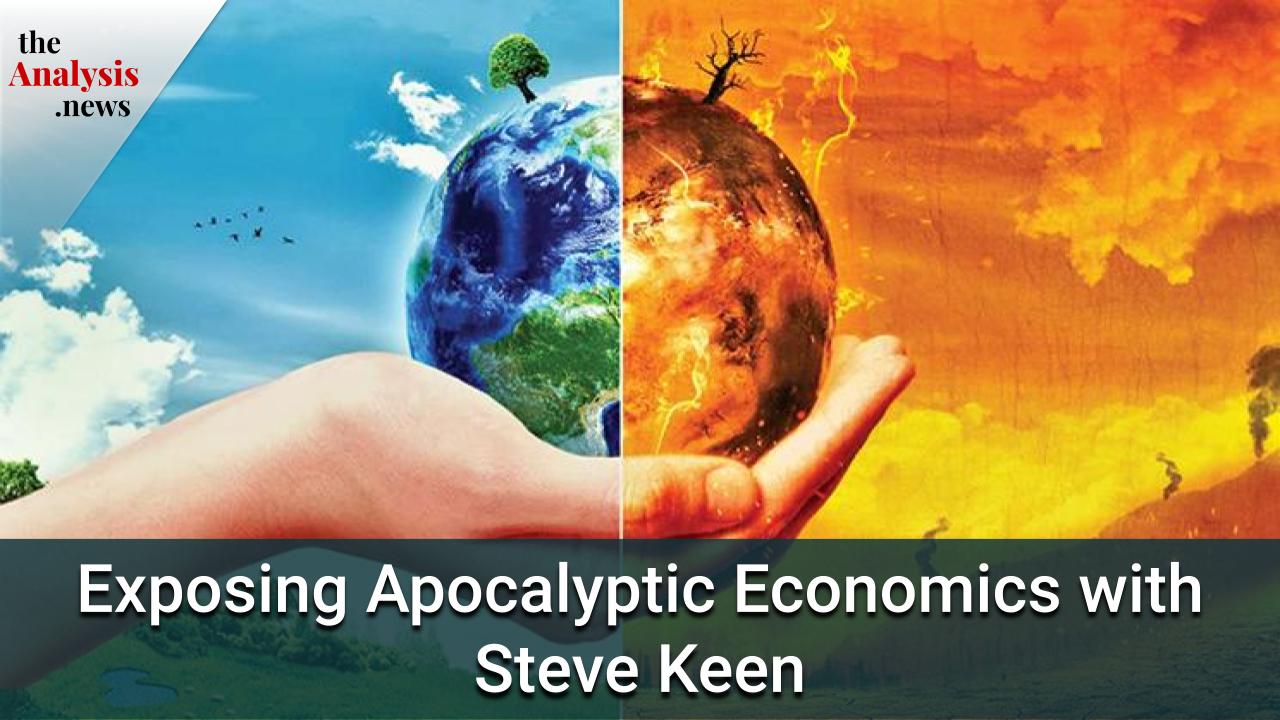
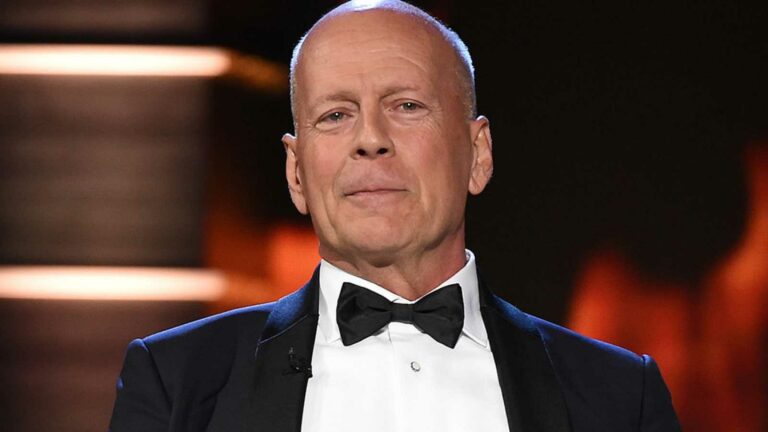

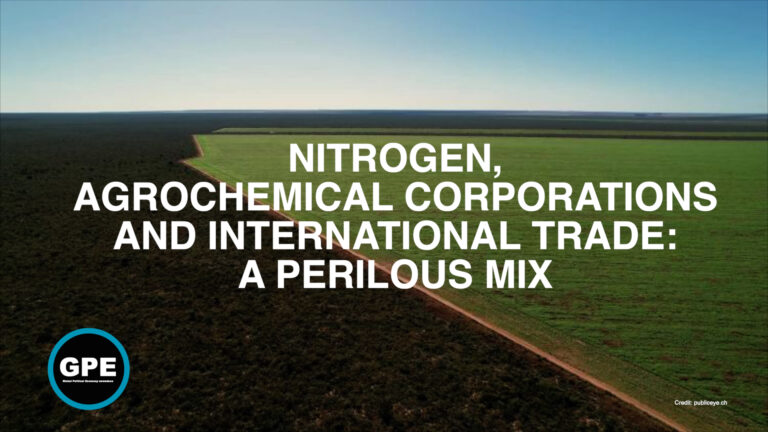

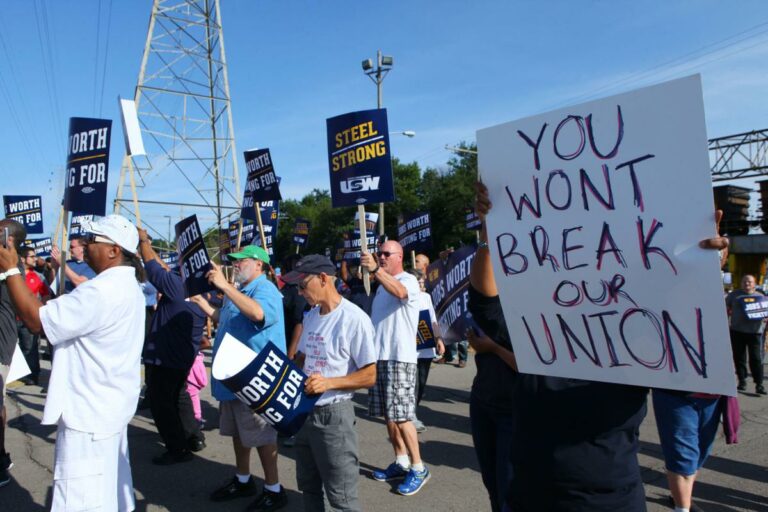
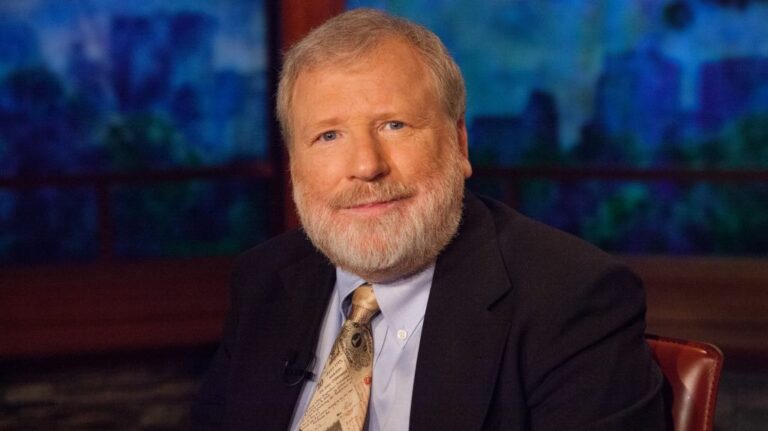
Colin asks, “what is the role of climate in the economy” – I suggest that his question is backwards – the ? we should be asking is what is the role of the economy in the climate – Herman Daly has written about this – and pointed out that from the beginning the mistake we have been making is treating the environment as a subset of the economy – when the reverse is true – the economy is a subset of the environment – the environment encompasses the economy and defines its limits – when one gets that, it is immediately obvious to even the dullest of us that you can’t have infinite growth on a finite planet – but when all the talk is about increasing our GDP and how to do it, and how to do that involves increasing production and therefore consumption – why produce more if it isn’t being “consumed” – and increasing production means increasing utilization of the environment’s resources in an economy which is linear and not circular – oops, we completely reject any limits to growth.
Mr. Keen says, and rightly so, that we need to reduce consumption – which means, at the very least, stop growing – others have argued that we actually need to “de-grow”, or at the very least employ a circular economy – in other words do what Mother Nature has been doing for millions of years – She doesn’t waste anything – everything is used over and over – nothing is thrown away, it is perpetually recycled. He says that “the rich” need to reduce consumption – but who are the “rich” – I suspect that most of us don’t consider ourselves “rich” – it is the millionaires and billionaires who need to stop consuming, not us, after all we are the “engine of the economy” – but how many I-Phones, e.g. do we “need – do we actually “need” any, do we need a new car every couple of years? I think it is clear where I am going – did we go off track when our “wants” become “needs” – do we need more than the basics, adequate food, clothing, shelter … do we want a society where more and more have to rely on “charity” to get this stuff – to many people on this planet, even in this country, the majority of us ARE rich.
So I think we need to look a little deeper than just our economic models, that wouldn’t have caught on in the first place if they didn’t serve or justify something in so many of us that we are loathe to relinquish ….
The end of what we think of as our “civilization” such as it is, wouldn’t be so bad (good book – Civilized to Death) if it didn’t also involve causing the end of other civilizations that have existed for thousands of years – in harmony with the earth, whose “economies” were/are quite deliberately designed to perform well within the limits of their environment – the ones we disparage as “primitive” – a people much happier than we until we came along and f***d the whole thing up ….
William Nordhaus sealed our fate with his junk science. An economist decided 2C was safe when clearly it isn’t!
Added below to a relevant blog on these rogues.
https://kevinhester.live/2022/04/06/the-rogues-gallery-of-the-climate-enemy-within/